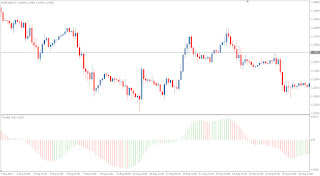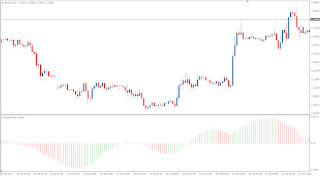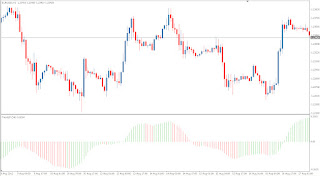 |
| Trend LR |
 |
| Trend LR |
 |
| Trend LR |
 |
| Trend LR |
Trend Linear Regression - TrendLR author of this indicator is Sergej Solujanov in 2008. Trend Linear Regression - TrendLR is very interesting indicator suitable to determine the entry and exit from the market, thus buying and selling and also determines the long-term trend. Indicator uses the principle of linear regression. Linear regression attempts to model the relationship between two variables by fitting a linear equation to observed data. One variable is considered to be an explanatory variable, and the other is considered to be a dependent variable. In linear regression, data are modelled using linear predictor functions, and unknown model parameters are estimated from the data.
Trend Linear Regression - TrendLR MQ4 Code Base (Copy Code)
//-------------------------------------------------------------------
// TrendLinearReg.mq4
// Copyright © 2008 Sergej Solujanov
//--------------------------------------------------------------------
#property copyright "Copyright © 2008 Sergej Solujanov"
#property link "irasol@bk.ru"
#property indicator_separate_window
#property indicator_buffers 2
#property indicator_color1 LimeGreen
#property indicator_color2 Red
extern int barsToCount=34; // Ďĺđčîä
extern int CountBars = 500; // Ęîëč÷ĺńňâî áŕđîâ äë˙ ďđîđčńîâęč
double buffer0[];
double buffer1[];
//--------------------------------------------------------------------
int init()
{
IndicatorShortName(StringConcatenate("TrendLR (",barsToCount,")"));
SetIndexStyle(0,DRAW_HISTOGRAM);
SetIndexBuffer(0,buffer0);
SetIndexStyle(1,DRAW_HISTOGRAM);
SetIndexBuffer(1,buffer1);
return(0);
}
//--------------------------------------------------------------------
int deinit()
{
return(0);
}
//--------------------------------------------------------------------
int start()
{
//
int counted_bars = IndicatorCounted();
double a, b, c, sumy, sumx, sumxy, sumx2;
double prev;
double current;
if(Bars <= CountBars + barsToCount+1) return(0);
int limit=Bars-counted_bars-1;
if (limit>CountBars) limit=CountBars;
for(int shift = limit; shift >= 0; shift--)
{
sumy=0.0; sumx=0.0; sumxy=0.0; sumx2=0.0;
for(int i=0; i<barsToCount; i++)
{
sumy+=Close[i+shift];
sumxy+=Close[i+shift]*i;
sumx+=i;
sumx2+=i*i;
}
c=sumx2*barsToCount-sumx*sumx;
if (c==0) c=0.1;
b=(sumxy*barsToCount-sumx*sumy)/c;
// a=(sumy-sumx*b)/barsToCount;
current=-1000*b;
prev=current;
if ((buffer0[shift+1] !=EMPTY_VALUE) || (buffer1[shift+1] !=EMPTY_VALUE))
if (buffer1[shift+1] !=EMPTY_VALUE) prev=buffer1[shift+1];
else prev=buffer0[shift+1];
if (current>=prev)
{
buffer0[shift]= current;
buffer1[shift]= EMPTY_VALUE;
}
else
if(current<prev)
{
buffer1[shift]= current;
buffer0[shift]= EMPTY_VALUE;
}
}
return(0);
}

